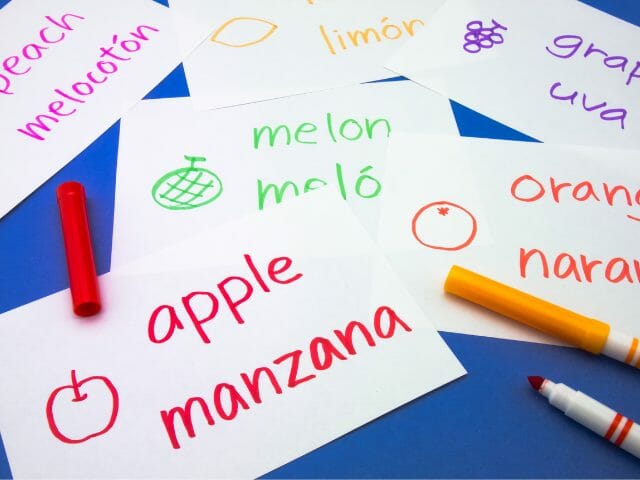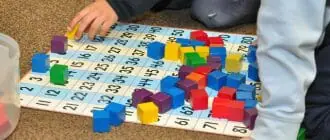Like adults, children and teens of all ages need to take breaks. If you’ve ever been teaching and noticed your students’ eyes glazing over, that is the number one indicator that it is time to take a break!
To discover this…
Continue reading the thirty fun break breaks for kids!
Physical Brain Breaks
GoNoodle

If you have a projector, Smartboard, or other digital display, GoNoodle is the perfect website for brain breaks for kids. With a wide variety of songs, dancing, and videos, your students will surely get their wiggles out. They offer many brain breaks for kids.
Freeze Dance
Play a song while children dance or move. When you pause the music, the students must freeze. If caught moving, the child goes back to their seat. This is one of many timeless brain break ideas.
You can add an educational element to this activity by playing learning songs. Imagine students hearing the alphabet song, days of the week, or counting to 100 songs while they dance. Kids will begin to learn the academic content embedded in the song lyrics while they are dancing.
The Floor Is Lava
One of many brain break games, play in a large environment or at home, but anytime you need to give your kids a break, simply shout, “The Floor is Lava!” Everyone must immediately jump to a chair, couch, or another surface without touching the floor.
Even in limited areas or outdoors, use rubber bases (from baseball or kickball equipment) or even paper plates or large squares of colorful paper taped to the floor. Kids will really burn off some energy jumping from one safe space to another in order to avoid the lava!
Jack Hartmann

Preschool and kindergarten teachers are very familiar with Jack Hartmann. He has been producing educational songs for kids since they were available on cassette tapes! He offers a vast assortment of videos online to get your kids up out of their seats.
Take A Hike
Literally! Take a quick lap around the courtyard, building, or yard if the weather is nice.
If your school has a track, walk one or two laps before getting back to work.
Jump In: You could try other interesting kids’ activities like indoor recess activities that will surely enliven further their sociability at school! I have written a post about this one — Indoor Recess Ideas: 47 Fun Break Time Activities For Kids.
Educational Brain Breaks
Storyline Online
Storyline Online is a website for children featuring online read-aloud books featuring well-known artists. Put down the pencil and tune in for a short story to take a brain break. Kids can even lay on the rug or cuddle up in a cozy corner for this break!
Around The World

Yes, this classic classroom game is still around, and kids continue to love it! Use multiplication, sight words, or other kinds of instructional flashcards to rotate throughout the room, giving children a chance to answer correctly. If a student answers incorrectly, they must sit down.
Find A Book
Sending a student to check out a library book at the media center is a great way to give a mental break and a bit of movement for a few minutes.
Sending students on a quick errand can also be a useful tool if you see the student is in need of a distraction. This can help if tensions are high from fear, anger, or other emotional stressors. Giving students an “out” allows them to clear their heads before returning to class.
Google Maps
If space or time is limited, but internet access is not, take a quick break by exploring another part of the world on Google Maps with a virtual field trip. Your students will feel like they were really traveling on these adventurous brain breaks for kids!
STEM Bins

You can create STEM Bins for your classroom that are easy to grab and use when needing a quick brain break. Bins include various hands-on activities such as Legos, blocks, or even play dough that encourages learning while having fun.
In my classroom STEM bins, I used miniature styrofoam balls and toothpicks so students could build unique three-dimensional structures. I also included magnetic tiles as well as Dominoes so students would have a wide variety of objects to manipulate and use for their creations.
Relaxing Brain Breaks
Yoga

You don’t have to be a Yogi to lead a mini-yoga lesson with kids. Making sure students are spread out and have a clear area to move, students can perform simple stretching exercises like reaching from side or side, rolling their shoulders, and touching their toes.
This option is also important for allowing blood to flow through the body. If your students are used to sitting in desks or at tables for lengths of time, you want to give them time to stretch and work out any tension building up in their neck and shoulder muscles.
Lights Out
Sometimes you just need to turn off the lights, lie down, and enjoy the silence. Use a sound machine or sleep sounds softly in the background to add tranquility to your peaceful brain break.
Visualize
If students require a stress-relieving brain break, try visualization. Visualization skills are necessary yet also ward off mental burnout. Closing their eyes, students listen to your calm description of a walk on the beach, finding shells, and hearing the waves.
This strategy is also useful when calming student nerves before a big test. You can simply walk students through a visual walk through the forest, picking up leaves and watching squirrels play in order to help them focus and relax before starting their assessment.
Melting
Go Noodle offers a Melting experience that is so much fun for kids. Students love to get out of their seats, and this physical brain break not only allows students to move around but also keeps them calm and quiet so they will be ready to tackle the rest of their day.
Balancing
Balancing activities make easy brain breaks because you can do them just about anywhere. Kids stand behind their chairs and gently support themselves with the touch of a finger on the chair for support—alternate balancing on one foot, then the other.
Creative Brain Breaks
Get Messy
If your kids enjoy getting dirty, try this brain break! Think finger paint, slime, or even cookie dough- take a few minutes to let your kids relax their minds and spend some time free-playing with some of these oh-so messy products in sensory brain breaks.
Quiet As A Mouse
This game works best for young children, but they love it! Sitting quietly, one child starts by being “the mouse” and tip-toeing to select a new mouse by tapping them gently on the shoulder. The child takes their seat so that the new mouse can have a turn choosing.
Fidget Toys
Kids can play and manipulate their fidget toys for a few moments while giving their minds a rest.
Swap Seats
Imagine a class of students taking notes and staring blankly at the whiteboard when their teacher exclaims, “Swap seats!” Talk about a fast brain break! Students jump up and trade seats with anyone else in the room before resuming their lesson.
Turn And Talk
A relaxing brain break for kids is to set a timer for a minute or two, something online will do, and allow kids to talk to the other students at their table or nearby until the timer buzzes.
Keep in mind, that timers come in handy when it comes to setting boundaries for brain breaks. Check out these other awesome classroom timers to help you manage your brain break for kids.
Productive Brain Breaks
Desk Clean Out
Students’ desks can sometimes get messy. Set a timer or play a song and let the cleaning begin!
Walking to the trash can and putting books and papers away provides movement.
Lining Up
Asking children to line up in an orderly fashion can often be a chore. Encourage kids to practice lining up at the door with their brain breaks. Students may line up alphabetically by name or in any other order preferred when doing these brain breaks.
Count it Out
Ever need a minute to grab something from your closet or find the book you need for your next lesson? Ask the students to count aloud by 5’s or tens while you get what you need. This brain break keeps kids focused on something while you get organized!
Snack Time
You can’t go wrong with this right brain break! Younger kids especially will be in a better mental space after a quick snack. After a few rounds of Goldfish crackers, the youngsters will be refueled and able to make it through the school day.
Keep in mind, that even a simple water break or bathroom break can provide mental relief to the overworked brain. You’d be surprised by the outcome of giving learners frequent water and bathroom breaks throughout the school day.
Paper Toss
This fun brain break will have your students begging you for another brain break! Simply allow your class to wad up their paper and toss it anywhere in the room. Then, ask students to pick up any two pieces of paper or trash from the room and clean it up.
The kids think this is just another one of your fun brain breaks, but they are also helping to clean up the room! It’s a win-win! Also, asking students to sharpen pencils or erase the whiteboard during downtime is a productive way to keep students moving before or after daily instruction.
Fun Brain Break
Heads Up Seven Up
Played in classrooms for decades, students put their thumbs up on the desk while putting their heads down on the desk. Select students sneak around and put 7 thumbs down. Upon calling, “Heads Up, Seven Up” The 7 students that were chosen will guess who put their thumb down.
Simon Says
Choose a leader to act as Simon. Simon tells the class what actions to do, but the students must listen carefully. If Simon doesn’t say, “Simon says,” before giving directions, any completed actions result in disqualification.
Made You Laugh
In a circle or specific path around the room, children begin by saying, “Ha!” The first student says it once. The second student says it twice. The third student says it three times, and so on. The object of the game is to keep a straight face, or you’ll be out!
This game gets a bit noisy, and as it evolves students start to lose their poker faces and roar with laughter. You may want to try this silly brain break outside at recess or towards the very end of the day when other nearby classes won’t be distracted by the raucous.
I Spy
Kids take turns identifying a hidden item in the room and give a hint as to the color of the object. For example, “I spy something blue.” Other participants take turns guessing the object. Once a player has identified the item correctly, it will be their turn to say, “I spy…”
Charades
This game works well with students of all ages. Simply have some pictures or words in a deck to choose from. Children take turns acting out different animals or gestures while the class tries to guess the word. Even non-readers could look at animal images and act like an animal.
Jump In: You could also include the Scoot game here because it’s fun and allows students to interact with one another in a fun way! Find out how to introduce this game to your class by going here — 6 Tips and 9 Awesome Practices for Teachers to Play Scoot in the Classroom.
Frequently Asked Questions
What are brain breaks for students?
Brain breaks for kids provide students a chance to take a moment to relax their minds. Brain breaks work by allowing students to pause their concentration briefly so they can get their creative juices ready for the next mental task, whether it be a test, homework, or project.
How do you teach brain breaks?
It is important to teach brain breaks so students understand their expectations. Explain the limitations by which students are to roam the room, the level of voice, and time limits for each brain break activity. Use signals to indicate the beginning and end of each brain break.
Final Thoughts
Break breaks allow children to burn off pent-up energy, stretch, increase blood flow, or rehydrate- all of these are fantastic ways to recharge and refuel before continuing a tedious lesson, test, or assignment in class. Brain breaks for kids are critical for their mental health.
We can all support our mental health by taking a brain break throughout the day as we work. Brain break activities can be as simple as doing a few jumping jacks or as intricate as creating a scavenger hunt. Take a moment to try out some of these brain break ideas today!
Last Updated on August 1, 2022 by Emily
- Facebook9
- Twitter21
- Pinterest67
- 97shares




